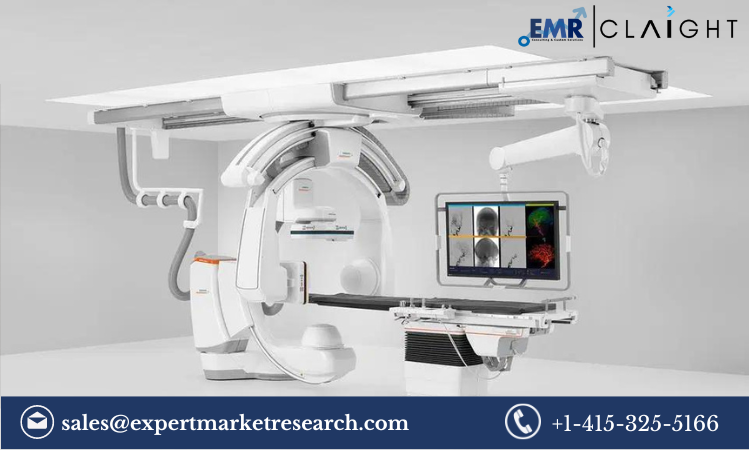The Angiography Devices Market: Trends, Size 2032

Angiography devices are critical tools in the diagnosis and treatment of cardiovascular diseases. These devices allow medical professionals to visualize the interior of blood vessels and organs, particularly the heart chambers, arteries, and veins. As cardiovascular diseases continue to rise globally, the demand for advanced angiography devices is witnessing significant growth. This blog delves into the key market dynamics, technological advancements, segmentation, regional insights, competitive landscape, and future outlook of the angiography devices market.
Key Market Dynamics
Market Drivers
Increasing Prevalence of Cardiovascular Diseases Cardiovascular diseases (CVDs) are the leading cause of death worldwide. The World Health Organization (WHO) reports that approximately 17.9 million people die each year from CVDs, accounting for 31% of all global deaths. The rising prevalence of these diseases is a significant factor driving the growth of the angiography devices market. According to recent studies, the prevalence of cardiovascular diseases is expected to grow at a rate of 2.3% from 2024 to 2032. This surge in CVDs necessitates the use of advanced diagnostic tools like angiography devices to accurately diagnose and treat patients.
Technological Innovations Technological advancements in angiography devices are significantly enhancing diagnostic accuracy and patient outcomes. Innovations such as 3D imaging and digital angiography provide more precise and detailed images, aiding in better diagnosis and treatment planning. Furthermore, the integration of artificial intelligence (AI) and machine learning (ML) in imaging technologies is revolutionizing the field. AI algorithms can analyze large volumes of imaging data quickly and accurately, helping to identify patterns and abnormalities that might be missed by human eyes. This leads to more accurate diagnoses and personalized treatment plans.
Wide Range of Applications Angiography devices are not limited to cardiovascular diagnostics. They are also used in neurological, oncological, and urological applications. For instance, neuro-angiography is used to diagnose and treat conditions such as aneurysms, arteriovenous malformations, and stroke. Oncological angiography helps in visualizing tumors and planning their surgical removal or targeted therapy. Urological angiography assists in diagnosing conditions like renal artery stenosis. This versatility is expanding the scope of the market, making these devices indispensable in various medical fields.
Market Restraints
Despite the promising growth, several factors are restraining the market. The high cost of angiography devices and procedures can be a significant barrier, especially in low- and middle-income countries. Additionally, stringent regulatory requirements and lengthy approval processes can delay the introduction of new devices to the market. Limited access to advanced healthcare facilities and trained professionals in developing regions also hampers market expansion.
Technological Innovations and Advancements
Advanced Imaging Techniques The introduction of advanced imaging techniques such as 3D imaging and digital angiography has revolutionized the field. These technologies provide high-resolution, three-dimensional images that offer more detailed views of the vascular system. Digital angiography, in particular, allows for real-time imaging, which is crucial during interventional procedures.
AI and Machine Learning Integration AI and machine learning are being integrated into angiography devices to enhance diagnostic accuracy and provide predictive analytics for better patient outcomes. AI algorithms can analyze imaging data faster and more accurately than traditional methods, helping to identify subtle changes that may indicate the early stages of disease. This technology is expected to lead to more personalized and effective treatment plans.
Portable and Mobile Devices The development of portable and mobile angiography devices is making these technologies accessible in remote and rural areas. Portable devices can be used in emergency situations and in field applications, providing critical imaging capabilities where traditional hospital-based systems are unavailable. This is particularly important in underserved regions where access to advanced medical facilities is limited.
Market Segmentation
By Product Type
- X-ray Angiography: The most common type of angiography, using X-rays to visualize blood vessels after the injection of a contrast agent.
- CT Angiography: Combines CT scanning with angiography to provide detailed images of blood vessels and tissues.
- MR Angiography: Uses magnetic resonance imaging (MRI) to visualize blood vessels without the need for a contrast agent.
- Others: Includes newer technologies and hybrid systems.
By Application
- Diagnostics: Used to diagnose conditions such as coronary artery disease, aneurysms, and vascular malformations.
- Therapeutics: Used in interventional procedures such as angioplasty, stent placement, and embolization.
By End-User
- Hospitals: The largest end-user segment, with most angiography procedures performed in hospital settings.
- Diagnostic Centers: Specialized centers that perform a range of diagnostic imaging procedures, including angiography.
- Ambulatory Surgical Centers: Outpatient centers where minimally invasive surgical procedures are performed.
Regional Market Insights
North America
North America dominates the angiography devices market due to the high prevalence of cardiovascular diseases and the presence of advanced healthcare infrastructure. The region is home to several key market players, driving innovation and market growth. Additionally, favorable reimbursement policies and increasing healthcare expenditure contribute to market expansion.
Europe
Europe follows closely, with significant contributions from countries like Germany, France, and the UK. The rising geriatric population, increasing healthcare expenditure, and strong focus on medical research and development are key factors driving market growth in this region. European countries also have well-established healthcare systems that support the adoption of advanced medical technologies.
Asia Pacific
The Asia Pacific region is expected to witness the highest growth rate during the forecast period. This growth can be attributed to increasing healthcare investments, rising awareness about cardiovascular diseases, and the growing adoption of advanced medical technologies. Countries like China, India, and Japan are leading the market in this region, with rapid economic growth and expanding healthcare infrastructure.
Latin America
Latin America is experiencing steady growth in the angiography devices market, driven by improving healthcare infrastructure and increasing investments in the medical sector. Countries like Brazil and Mexico are at the forefront, with rising demand for advanced diagnostic tools and increasing healthcare expenditure.
Middle East and Africa
The Middle East and Africa region is also witnessing growth, albeit at a slower pace. The market is driven by increasing healthcare investments, growing awareness about cardiovascular diseases, and improving access to advanced medical technologies. However, challenges such as political instability and limited healthcare infrastructure in some areas may hinder market growth.





